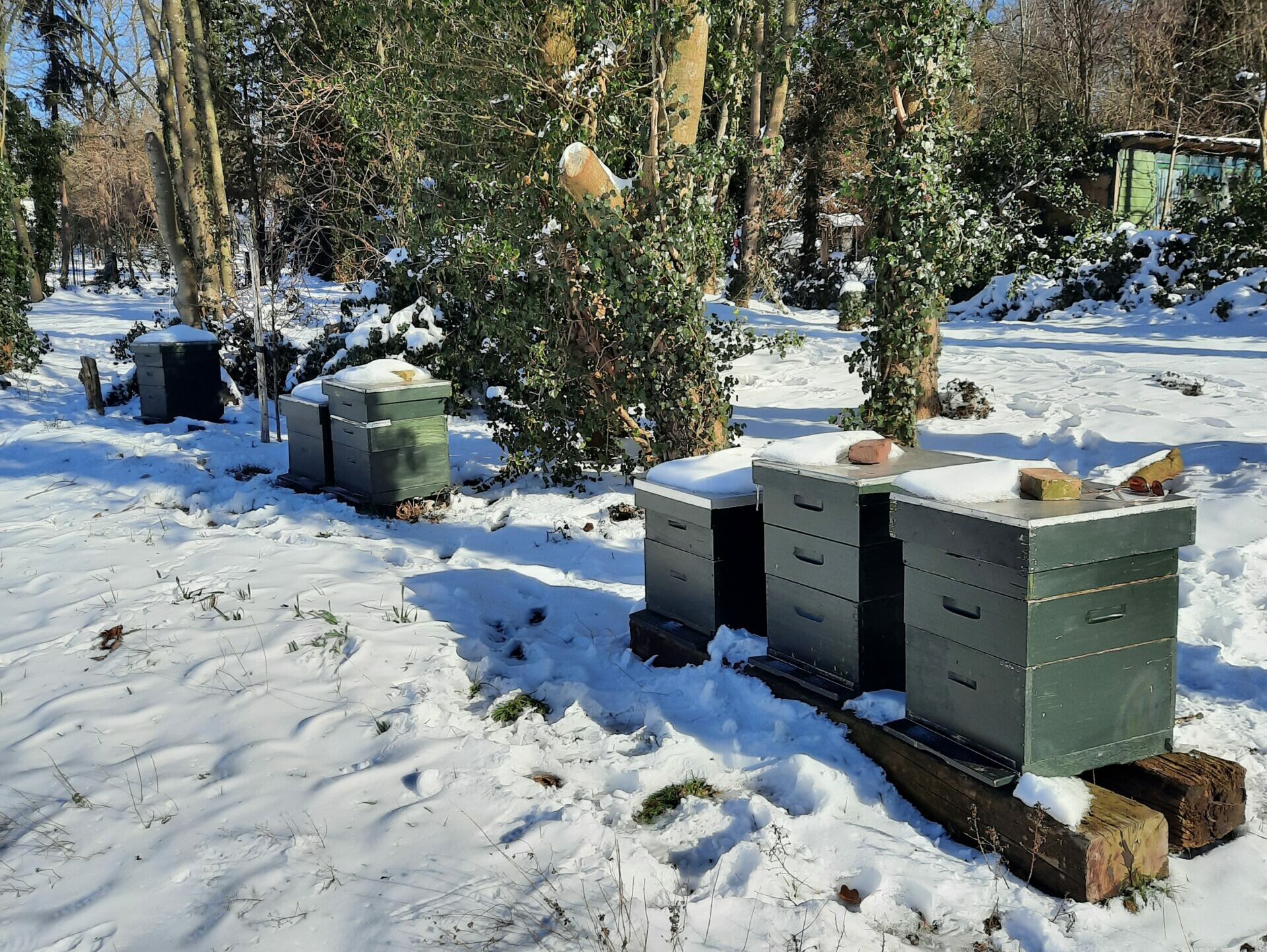Piping Hot Bees & Boisterous Buzz-Runners: 20 Mysteries of Honey Bee Behavior Solved.
Thomas D. Seeley
Princeton University Press, 2024
ISBN 9780691237695.
Thomas Seeley is an American bee behaviour researcher who continues the research tradition of Karl von Frisch and Martin Lindauer on communication in a bee colony. The book covers a series of observations and experiments over a period of about 50 years. Seeley builds on the results found by Von Frisch and Lindauer, whereby he of course has more technical means at his disposal to record individual behaviour of bees than his predecessors, in particular the use of video cameras.
The elegantly designed experiments provide the reader with much insight into the bee colony as a decision-making unit. The book also clearly shows the love Seeley has for these wonderful creatures.
In this fascinating book he unravels in more or less chronological order twenty questions about the behaviour of honeybees. Some of these were already discussed extensively in his previous books. The book is actually a record of his impressive career as a bee researcher, written in a very personal and narrative style.
Given that Seeley’s career spans some 50 years, it is interesting to read about the long time span that often elapses between the first fledgling research idea and its development until the mystery is fully unravelled.
Because there are many connections between the 20 mysteries and much of the research is based on previous results, it is inevitable that some things are repeated, but given the complexity of the subject matter, I have absolutely no problem with that.
It is very interesting to read how seemingly simple experimental designs can lead to extremely detailed and scientifically rigorous conclusions.
For his experiments he often uses, besides the Arnot Forest near Ithaca, New York State, which has been mentioned many times, an isolated environment, such as Appledore Island (in Maine, USA), a small island with limited foraging possibilities and without other bee colonies, so that he can accurately attribute the effects to one factor. Could such research have been achieved in the Dutch situation? Perhaps more difficult. On the other hand, Von Frisch and Lindauer also conducted their observations in an environment where other bee colonies and foraging sources were indeed present.
‘Mysteries solved’, says the subtitle. But at the same time, Seeley also indicates that there is still a lot to investigate. One human life is too short to fully understand the bees, but he outlines the path that successors can take to unravel even more secrets.
This book is a must-read for everyone. Beekeepers, but also animal behaviour scientists, will look at the honeybee with even more wonder and admiration.
The list of research questions that Seeley poses:
- How does a bee colony prevent suffocation, especially due to excessive CO2 levels?
- What criteria do swarm bees use when assessing the quality of a new home? This question was already discussed extensively in Seeley’s book Honeybee Democracy.
- How do scout bees search for nesting sites? Finding a nest space with the right dimensions is vital for a swarm.
- How does the decision-making process in the swarm take place regarding the final choice of a new nest cavity?
- Is there consensus or quorum? In other words, do all scout bees have to agree with each other or is only a minimum number of bees required?
- How is the swarm prepared for the upcoming departure? When is the swarm ready?
- What is the signal for immediate departure?
- How is the swarm guided to the new nest space? How can the swarm be sure that the queen is also in the swarm?
- How flexible are the bees in a swarm in communicating about a new nesting space?
- How is the message of queenrightness spread through the colony?
- What are the differences and similarities between Apis mellifera, cerana, florea and dorsata?
- How does the sharing of information about food sources proceed in a colony? How does a colony organise itself around foraging?
- How do bees ‘read’ the information from returning forager bees?
- How does a colony know whether there is nectar flow and how does this influence the behaviour of forager bees and house bees that accept the nectar?
- The mystery of the tremble dance. This differs from the waggle dance and the round dance. Von Frisch already observed this jitter dance, but could not explain it.
- Are there two recruitment dances or one?! Namely the waggle dance and the round dance. Or are these in fact the same dances that only differ in intensity?
- What role do the movers and shakers play in a colony that is preparing for swarming?
- What are the ins and outs of grooming oneself and each other (respectively autogrooming and allogrooming)?
- How does regulation of the water supply take place in a population that has a water shortage?
- How is propolis collected and made and how is the need for it communicated?
